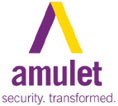 Kieran Mackie of Amulet explores the importance of well-trained security staff in preventing harassment in the workplace
Kieran Mackie of Amulet explores the importance of well-trained security staff in preventing harassment in the workplace
The Worker Protection Act was updated in October 2024 and marks a significant shift in workplace safety and harassment prevention. It has been designed to strengthen protections for employees and requires employers to take proactive measures to prevent workplace harassment, including harassment by third parties such as customers and clients.
This legal shift places greater responsibility on businesses to safeguard their employees, particularly those operating in public spaces such as shopping centres and train stations. For facilities and estates managers this legislation underscores the need for stronger collaboration with security teams to create safer environments.
KEY RESPONSIBILITIES FOR ESTATE MANAGERS AND SECURITY TEAMS
Businesses must ensure that their security operations align with the requirements of the Worker Protection Act while also considering the broader safety of customers and members of the public. A strong security presence can deter potential offenders, but prevention requires more than just visibility.
Regular patrols, CCTV monitoring, and strategic positioning of security personnel in busy and high-risk areas are necessary to protect both employees and visitors. Security teams must also be prepared to recognise and respond to harassment incidents swiftly, applying de-escalation techniques to manage tensions effectively and ensuring that all harassment reports are taken seriously and addressed appropriately.
Employers are legally obligated to demonstrate they have taken all reasonable steps to prevent harassment and should work closely with security teams to ensure incidents are properly documented, risk assessments are conducted, and security measures are adjusted where needed. While the Act specifically protects employees, ensuring the safety and wellbeing of customers and the public should also be a priority. Shopping centres and train stations, for example, are busy environments where harassment can occur, and addressing it promptly helps maintain a positive, inclusive atmosphere for everyone.
An enhanced focus on preventing harassment doesn’t have to result in a bigger security budget, or the reduction of a security presence elsewhere. Our TravelSafe Officers on Northern Trains undertook a six-month long, first-of-its-kind experiment alongside Cambridge University and the Rail Delivery Group that was aimed at reducing Violence Against Women and Girls (VAWG) at railway stations. They conducted thousands of patrols, and the results indicated a 66 per cent reduction in crimes relating to VAWG at these selected locations. This was all achieved without extra resource, but by deploying a strategic assignment of officers at targeting harassment hot spots.
 Likewise, our TravelSafe Support and Enforcement Officers are providing a security presence on buses on the Manchester Bee Network and have successfully dealt with hundreds of welfare and safeguarding incidents, many of them linked to harassment.
Likewise, our TravelSafe Support and Enforcement Officers are providing a security presence on buses on the Manchester Bee Network and have successfully dealt with hundreds of welfare and safeguarding incidents, many of them linked to harassment.
In both examples, the result is a safer environment for all and increased confidence in using public transport.
TRAINING AND COMPLIANCE FOR A SAFER WORKPLACE
Given their role in workplace safety, security teams must receive adequate training to handle harassment-related incidents effectively. Training programmes should cover harassment awareness, de-escalation techniques, crisis management, and effective communication.
Soft skills in particular are a vital component of a security officer’s toolkit. There remains the stereotype of a security officer as a person who is a physical deterrent – almost like a bouncer at a nightclub – but this couldn’t be further from the truth. The modern officer is adept at de-escalation and situation management thanks to a range of soft skills such as communication, empathy and problem-solving.
To ensure compliance with the Worker Protection Act and enhance workplace safety, businesses should create a culture where employees and customers feel empowered to report harassment concerns. Clear protocols must be in place to guide security teams on how to respond to harassment complaints, and business leaders should work closely with HR to refine policies and implement effective strategies. Ensuring customer safety in public spaces also enhances the overall experience, making shopping centres and train stations more welcoming and secure environments.
SAFETY IS EVERYONE’S RESPONSIBILITY
A holistic approach to harassment prevention requires close collaboration between security teams, HR departments, estate managers, and even external stakeholders such as law enforcement and local authorities. While security officers play a frontline role, they cannot address harassment in isolation.
In transport and retail settings, partnerships with local law enforcement and community organisations can help develop coordinated strategies, such as public awareness campaigns or joint training initiatives. One reason that our officers on trains and buses have been so effective is because of great relationships with our clients, police and local charities.
By crafting a culture of shared responsibility, businesses can create a more comprehensive and sustainable approach to workplace safety, ensuring that security measures are not only reactive but also preventative and employee focused.
Security officers are no longer just passive enforcers of rules – they are active stakeholders in harassment prevention. They should be viewed as an integrated function within an organisation’s risk management strategy, where policies, training, and incident responses align with legal obligations. As public awareness of workplace harassment grows, businesses that prioritise robust security measures and effective training will not only meet legal requirements but also create a culture of safety and respect.
In association with www.amulet.co.uk.





